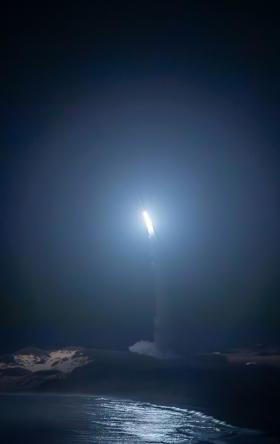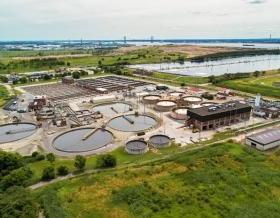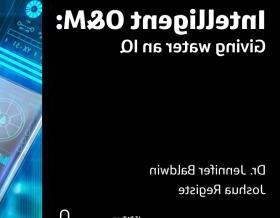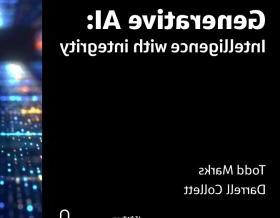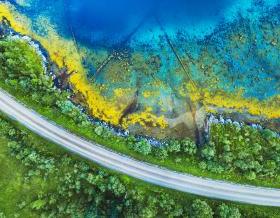
Our professional divers work on the coolest projects. 如果我们告诉你,我们正在帮助保护和恢复别克斯岛附近海域的珊瑚和其他珊瑚礁生态呢, Puerto Rico using innovative, synthetic mini-reefs referred to as “Coral Arks”?
Why do we need Coral Arks?
Submerged lands under U.S. Department of Defense (DoD) management in tropical marine zones — offshore islands such as Guam, Hawaii, and Puerto Rico — have rich coral reef communities.
Because coral reefs are protected under U.S. law, 国防部可能需要减轻建造和管理码头和码头等水下结构或清理珊瑚礁群落内的弹药等活动对珊瑚造成的损害. This is where Coral Arks come into play.
“It’s vital that we invest into innovative, 智能和有弹性的气候应对首页,为未来保护我们的海洋生物和社区.”
Protecting reefs in Puerto Rico
In Puerto Rico, the Vieques Naval Training Range (a former munitions training site) is undergoing an extensive cleanup. 这项环境恢复工作包括在保护海洋生态系统的同时清除未爆炸弹药.
Before underwater munitions can be removed, 必须对这些弹药进行评估,以确定它们上面或附近是否有受威胁或濒临灭绝的珊瑚等海洋生物在生长,并在移除弹药时可能受到损害或摧毁. If that’s the case, the corals can be detached and moved to new locations that allow the marine life to thrive.
这些被称为“珊瑚方舟”的小型珊瑚礁结构为支持珊瑚迁移工作提供了合适的基质, 作为苗圃,协助珊瑚生长和组成珊瑚礁生态系统的各种生物群的发展,对珊瑚的长期健康和生存至关重要.
While corals could be relocated onto natural hardbottom structures such as rock, 方舟可以迁移到其他地方,或在水柱上或下移动,为迁移的珊瑚创造更理想的环境.
A truly cross-disciplinary, collaborative effort
We’re working closely with our client, U.S. Naval Facilities Engineering Systems Command (NAVFAC), as well as scientists from the Naval Information Warfare Center (NIWC) and San Diego State and Harvard Universities (who developed the Arks), with a long-term goal of creating thriving "mini-reef" communities.
这些基于自然的工程解决方案支持海军的保护和恢复目标,同时建立更好的水下生态系统. Once re-established, these corals can help protect our coasts from erosion and natural disasters, resulting in an environmental net-benefit.
“It’s vital that we invest into innovative, 智能和有弹性的气候应对首页,为未来保护我们的海洋生物和社区,” says Jacobs Environmental Solutions Vice President and General Manager Bret Muilenburg. “我期待着继续我们的环境多样化工作,同时支持海军的关键任务目标.”
All hands on reef
Recently, members of all three of our Jacobs dive groups — Engineering, 科学和弹药反应-安装了两个测地线球体(“珊瑚方舟”),就在前训练靶场的近海. Prior to anchoring the Coral Arks to the seafloor, 弹药潜水员对该地区进行了搜索,以便在不遇到水下弹药的情况下安全地安装锚.
After that, 工程潜水员安装了锚,然后使用滑轮系统将“方舟”从海面拖到约25英尺(7英尺)深的地方.6 meters) and attached them to the anchors, 允许它们在水柱中以最佳深度盘旋,以促进珊瑚和珊瑚礁群落的发展.
Once anchored in place, the scientific divers attached limestone plates, each containing an array of transplanted, multi-species coral fragments, to mounting locations on the Arks, as well as instruments designed to record a host of oceanographic conditions.
Going forward, these Arks will continue to be seeded with corals, potentially including those removed from munitions during the cleanup, and regularly monitored for coral growth rates, naturally developed reef biodiversity and overall health, ultimately building a better reef for the future.
-

Progress shot: Day 1
-

Progress shot: Day 98
Our multifaceted diving groups can address any situation
The Coral Ark project is just one of many exciting projects our divers are working on. This Puerto Rico project involved all three of our dive divisions, which commonly perform other types of activities such as:
- Engineering Divers: Bridge and marine structure inspections, testing, imaging, design, and construction oversight.
- Scientific Divers: Marine ecology assessments and monitoring; threatened and endangered species identification and protection; sediment, water, and biota sampling; and marine ecology mitigation.
- Munitions Divers: Unexploded ordnance (UXO) detection, identification, avoidance, and removal.
Click on these links for more information on the Coral Arks project or specifically the Puerto Rico project So much progress is already being made — the photos above show our coral plates on day 1 and day 98.
You might be interested in...
-
 News
NewsTaking a Deep Dive: Q&A with Engineer Diver Group Lead Robert Garrity
Would you rather work in an office, or under the sea? Meet Engineer Diver Group Lead Robert Garrity as we discuss his love of engineer diving, the ocean and his team.
-
 Showcase
ShowcaseVieques Island, Puerto Rico
From the mid-1940s until 2003, 海军和盟军在别克斯岛东部进行武器试验和其他军事训练活动, within the 15,000-acre Vieques Naval Training Range, as well as offshore. Since 1999, 雅各布斯为海军在别克斯岛的环境和弹药响应项目提供了持续的支持. We're responsible for investigation and munitions response quality assurance for more than 20,000 acres of land and underwater area potentially containing munitions.
-
 Solution
SolutionNational Security Market
Encompasses solutions for public and private sector institutions, systems, and programs that serve to create, secure, and defend national interests and infrastructure against foreign and domestic threats across multiple domains.






